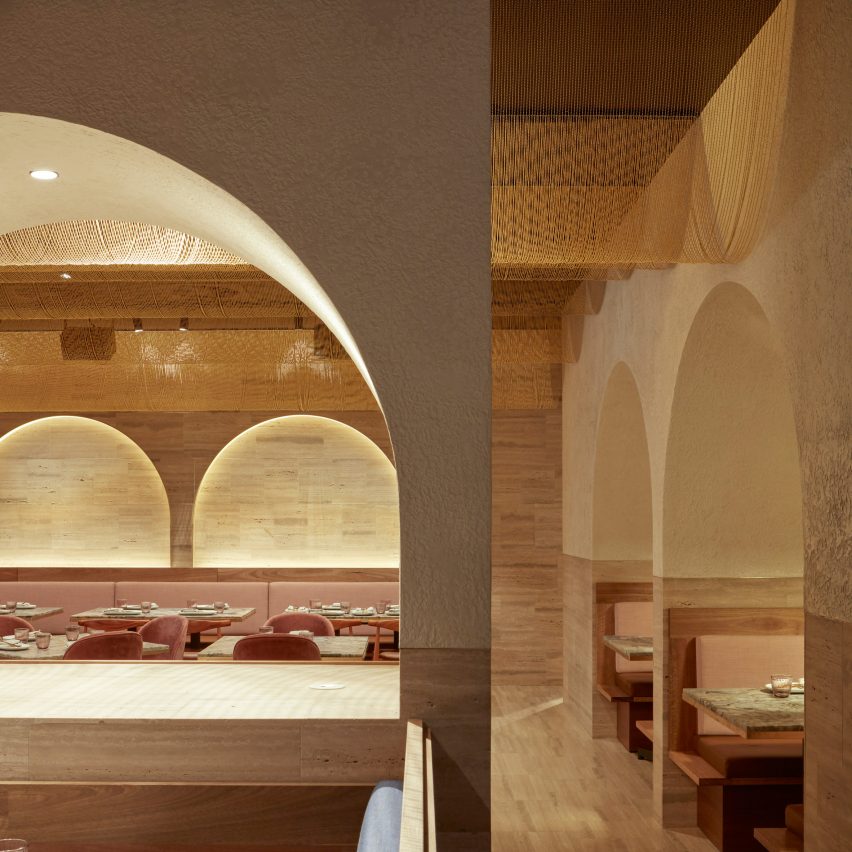
Recessed arches, free-standing stone plinths and hanging rooftop plants are designed to recall the ancient ruins of Babylon inside a restaurant and bar in Sydney.
The restaurant, which takes its name from the city of Babylon, is located on the rooftop floor of Westfield shopping centre. Hogg & Lamb designed it with numerous arches and niches from travertine and natural stone to recall the ancient city.
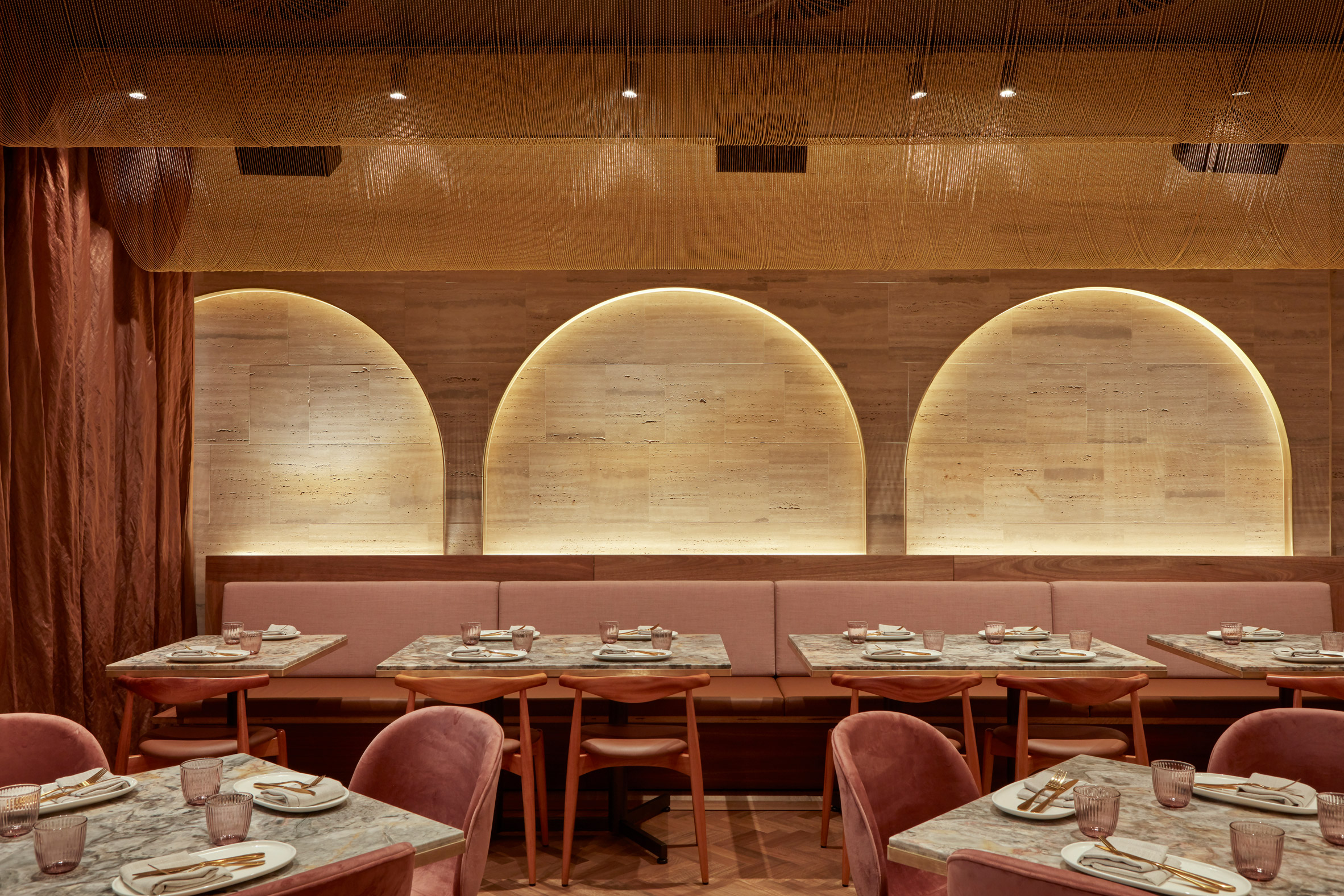
Overall Babylon has been arranged as a miniature city, with different zones designed as urban districts containing enclosed groups of tables that are the buildings.
"We researched Mesopotamian cities and artwork which helped influence the planning, the buildings, streets and arcades were helpful to create a locale, we were carful not to make a 'museum', but rather a place where people can have fun, relax even misbehave," said Hogg & Lamb co-founder Greg Lamb.
"Cities generally break down into quarters or districts each with their own character, we tried to reflect this in the way the venue is planned by adjusting the volume and materials of the various spaces," he told Dezeen.
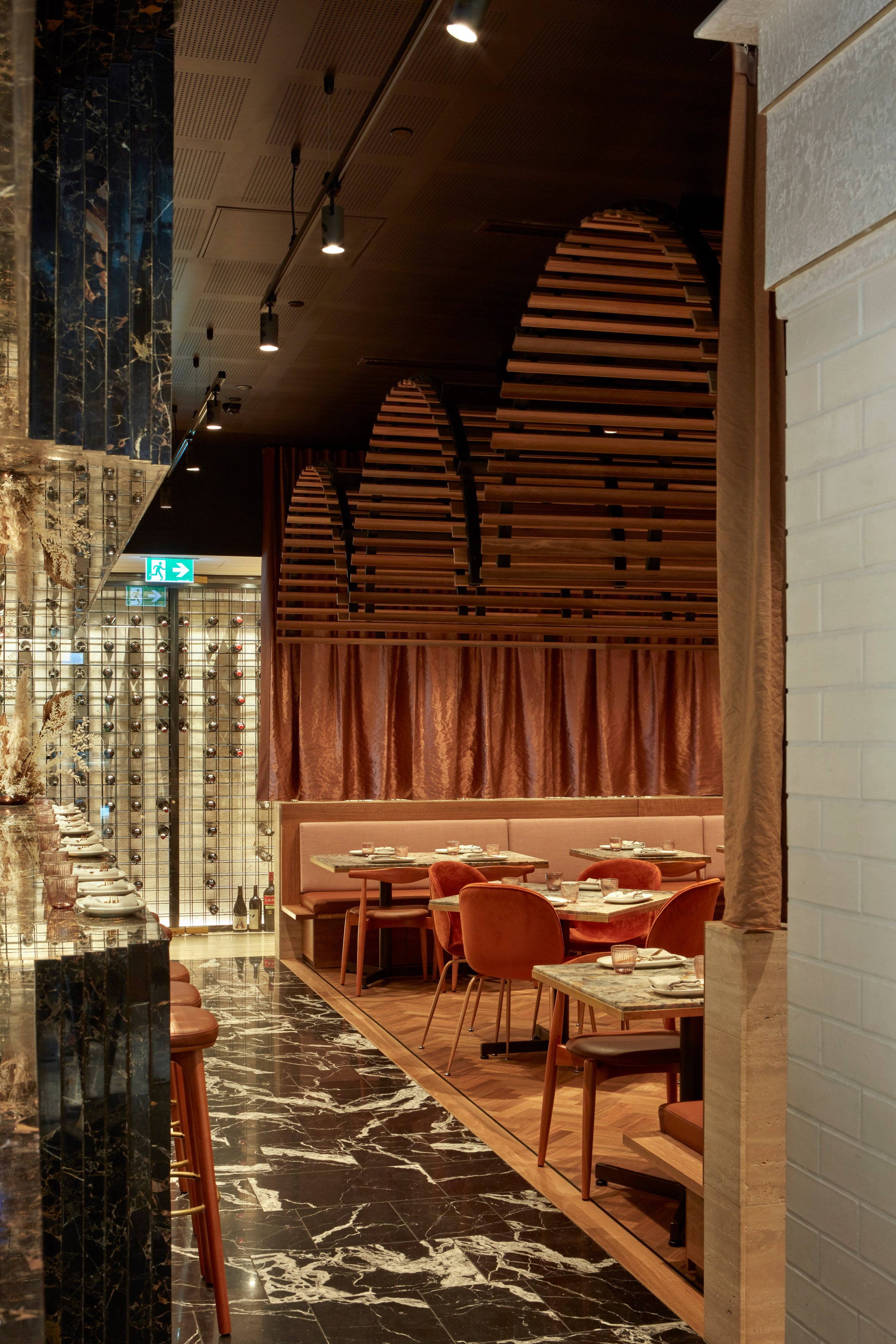
Blocks containing the central kitchen, where Middle-eastern cuisine is prepared, and the bar spatially divide the floor area.
Roofs of the other structures within the restaurant are disconnected from the ceiling to enable plants to hang over the edges.
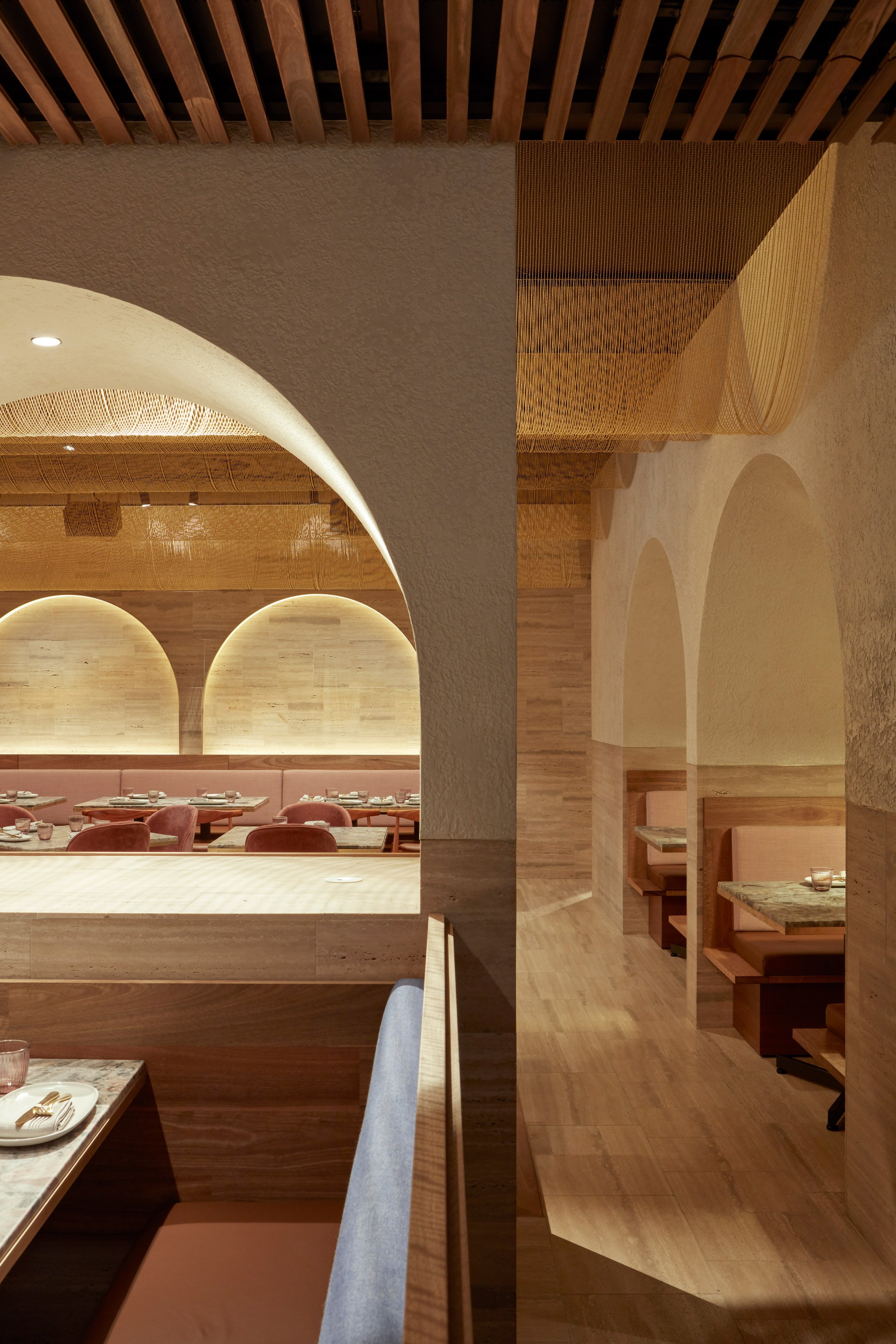
Travertine plinths and vaults throughout the design meet the timber parquet flooring, where the similarities in appearance were intended to reinforce the concept of an excavated entity.
"An excavation-like style is exactly what we had in mind for some areas," said Lamb. "We're mindful that Babylon is above a shopping centre and so creating that level of authenticity was always going to be a challenge."
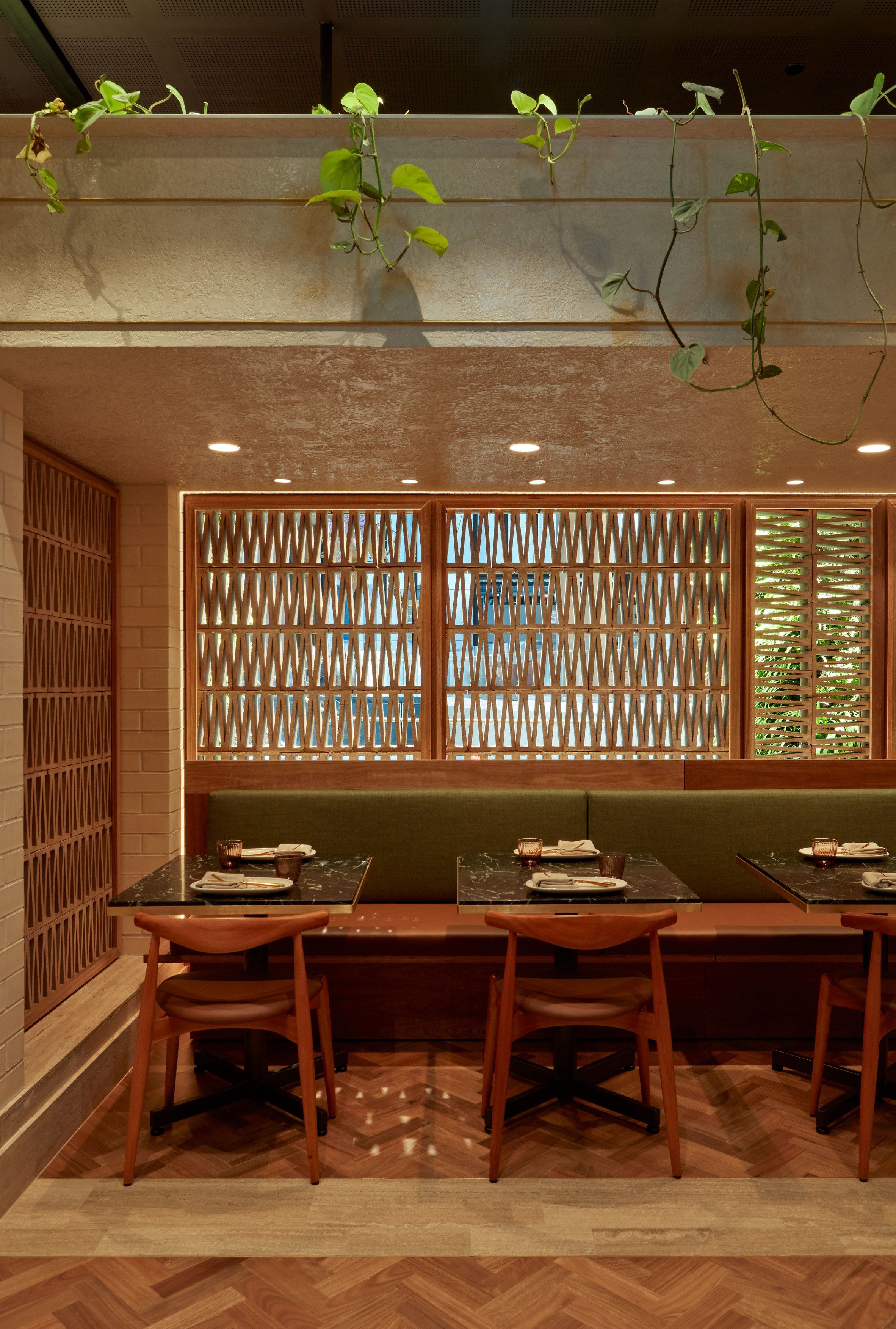
Materials including terracotta, clay and natural stone embellish the interior, designed to reflect the old Babylonian city landscapes.
"The contrast of historical archetypal references juxtaposed against refined and luxurious finishes deliver a feast for the eyes and the appetite," continued Lamb.
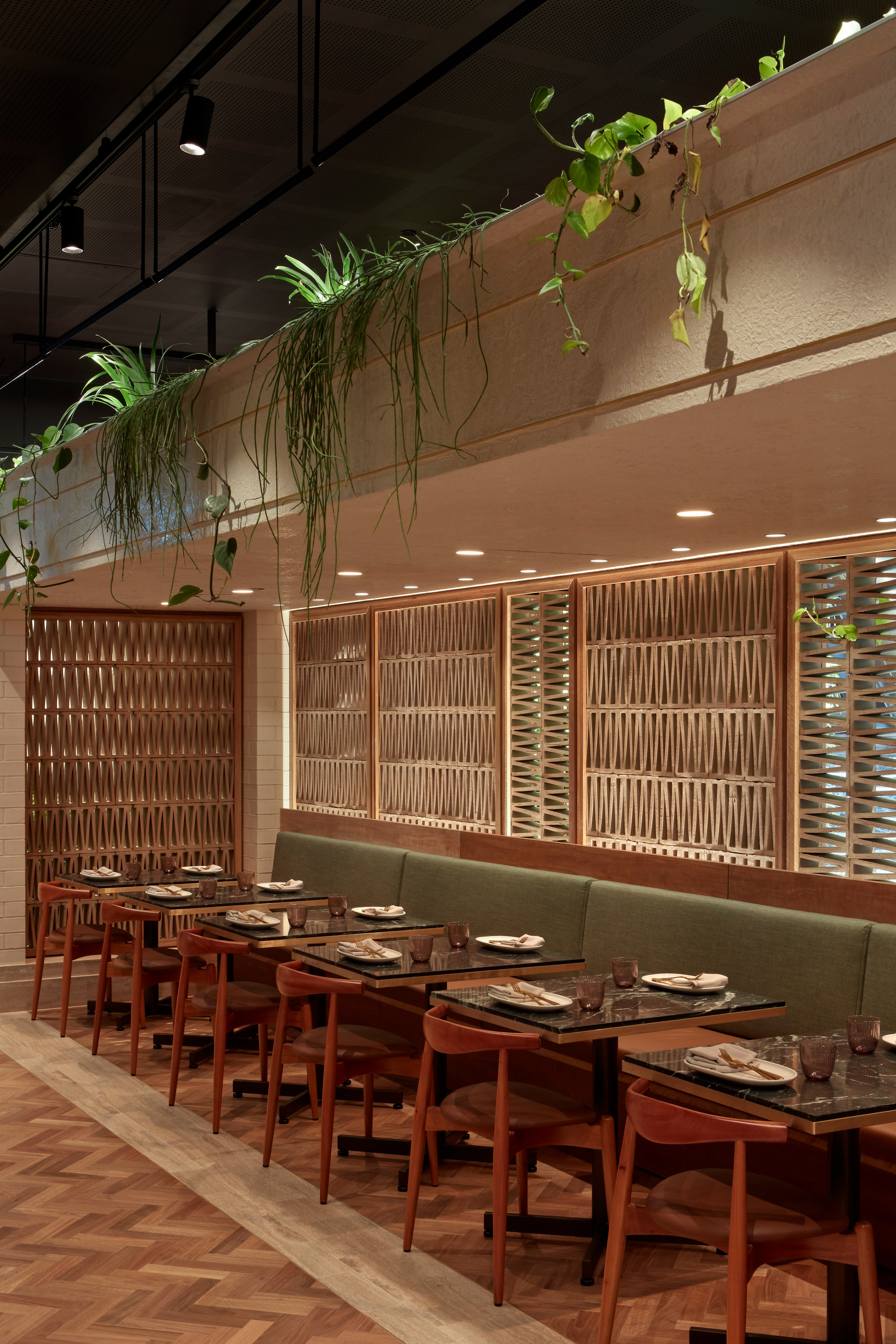
A permeable screen hand-cut from terracotta blocks stands at the front of the restaurant, where imperfections on the tiles were adopted by the studio to add texture to the facade.
Framed within a masonry structure, the screen helps maintain privacy and comfort but enable glimpses to outside for customers dining behind.
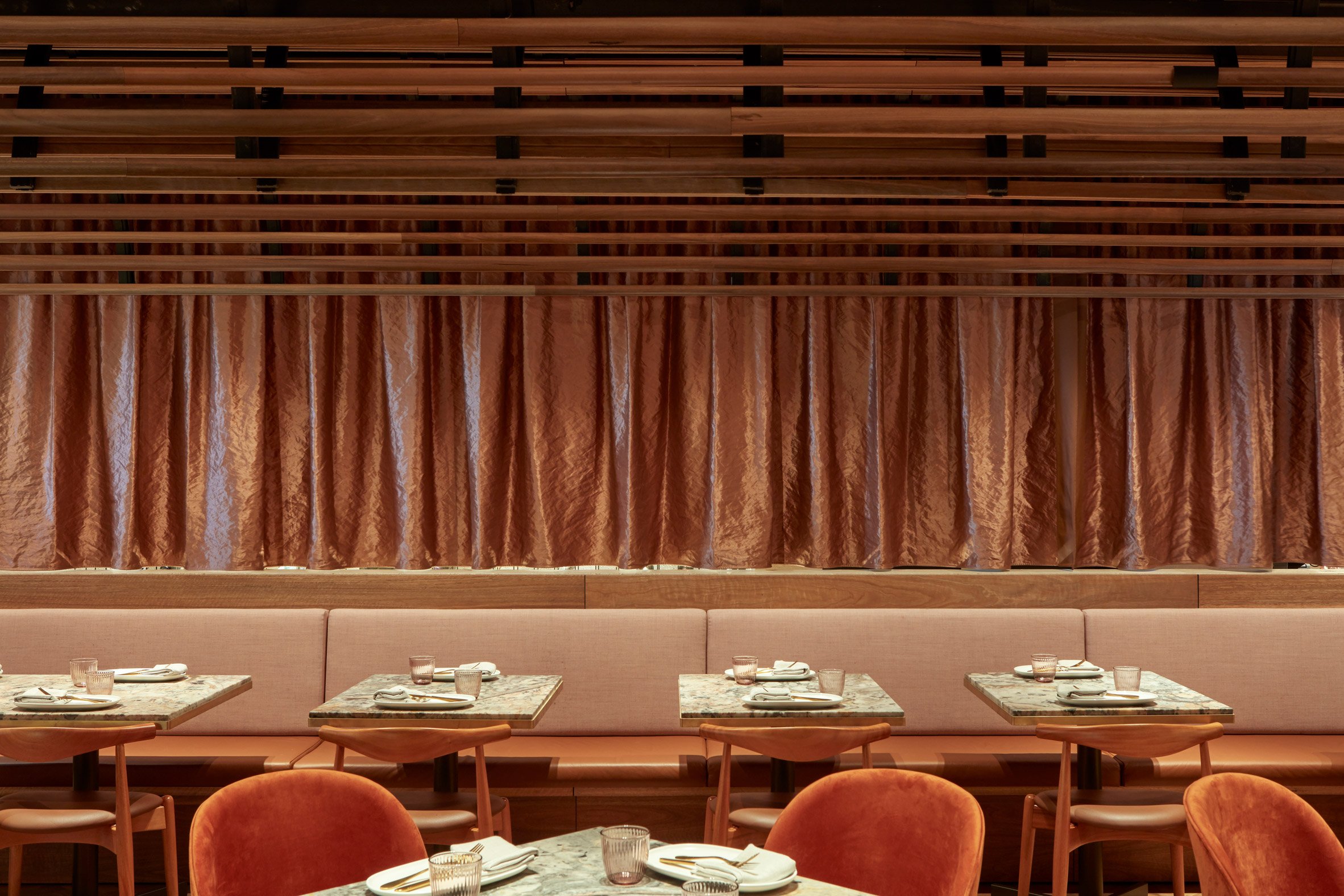
Timber-slatted barrel vaults are suspended from the ceiling in the second dining area, where the lower ceiling height provides more intimate spaces.
In the bar, wine is stored in a wire frame on the northern travertine wall. Seen behind the intentionally spaced out bottles, the stone is left unfinished by the studio to exaggerate the appearance of excavated spaces.
Soft sheer curtains conceal the rest of the masonry interior, complementing the soft lines of the curved timber vaulting and arches in the space.
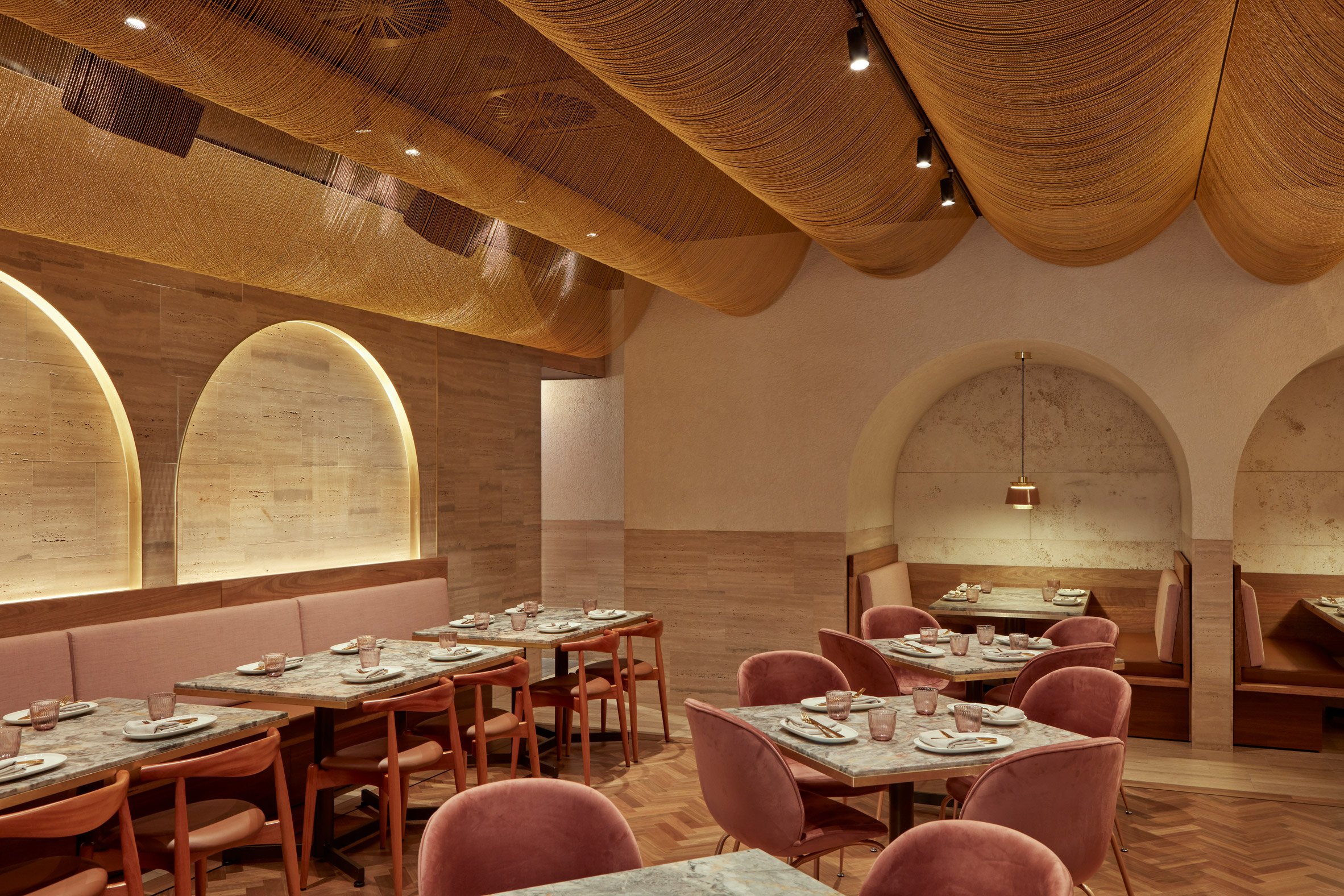
Mesopotamian architectural styles were followed to inform the technical details. Hogg & Lamb chose to use simpler butt joints to more sophisticated mitre joinery, as a "more honest" construction that demonstrates Babylonian characteristics.
Dining experiences within the monolithic, cave-like Nikunotoriko restaurant in Tokyo is created by its restricted material palette, whilst a bar in Kilkis uses arches and exuberant stone detailing to devise a mosaic of spaces.
Project credits:
Architect: Hogg and Lamb
Project team: Greg Lamb, Michael Hogg, Lucia Castro Perez, Kasia Jarosz.
Project management: Mantle Group
Builder: Xenia
Services engineer: BSE
Retail design manager: Scentre Group
Lighting design: Tim Barry Lighting and Design
Structural engineer: MPN
Stylist: Stewart Highfield
The post Hoggs & Lamb recreates features of ancient Babylon in Sydney restaurant appeared first on Dezeen.
https://ift.tt/34tbWAP
twitter.com/3novicesindia
No comments:
Post a Comment